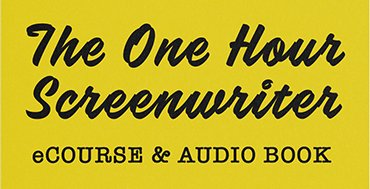Back to Basics Pitch & Writing Summary


While these basic tools may seem overly crude or simplistic, I found that a great lesson of screenwriting was to pay attention to these fundamentals of craft, even as I tackled more challenging or sophisticated writing projects.
Tell a story: It sounds simple, but writers often slip off the narrative track. I’m not saying you have to write a straight-ahead, traditional narrative, but always remember that the reader is always asking, if only unconsciously, “What happens next?” The key to screenwriting is that every scene (in the generally fifty or so “master scenes” of a movie) must push the story ahead. Ask yourself, “what is the ‘forward’ in this scene?” How does each chapter of your book push the story ahead? It doesn’t have to be a cliffhanger or a plot twist, it could be a simple character trait that you reveal (unexpectedly). But it has to move us forward.
Character is king: Whether you are writing a thriller or a domestic drama, your characters — and especially your central character — is the key to good writing. For genre fiction — and most commercial movies — the plots are often incidental or interchangeable. What makes the piece memorable is the characters. Lots of writers focus too much on plot and not enough on character. Audiences and readers — like all of us — want to spend time with engaging and real people. Characters make your story come alive.
Keep up the pace: While movies demand a vigorous, even relentless pace that isn’t as important in books, the idea of moving the story forward with a sense of rhythm is critical. Writing, like music, demands a kind of internal rhythm and pacing to make it work. If you’re not feeling the rhythm in your writing, it probably isn’t working.
Find (and maintain) the right tone: Tone is a subtle and often elusive quality in any piece of writing. Most writers explore the tone of their work as they go along, rather than fix it at the beginning, which is fine. But in screenwriting, the medium demands a steady, persistent tone for the piece. Audiences have to be reminded — often again and again — of the film’s tone, whether it is a comedy, drama or action piece. So each scene – or in the case of fiction, each chapter — has to be measured against a yardstick for tone. Too much? Too little? Over the top? Above all, is it consistent?
Think in pictures: Film is primarily about “moving” pictures, and so screenwriters are forced from the outset to think in pictures. But this is a great discipline for all wordsmiths, who must understand the power of the visual, even if the pictures are drawn in words rather than on video screens. The economy of visual images in conveying ideas and emotions is a powerful tool that screenwriters — and all writers — should have in their toolbox.
Whole post is here http://www.huffingtonpost.com/hoyt-hilsman/what-i-learned-from-scree_b_823657.html



Create a visual map for a character’s emotional journey. Pull stories from character rather from rote story structure beats. Some of the largest international media companies, use this in story and character development.


A clear concise guide for writers and producers to have by their side as they embark on a project. It gives a really vital reminder of what is key for story success.

No comment yet, add your voice below!